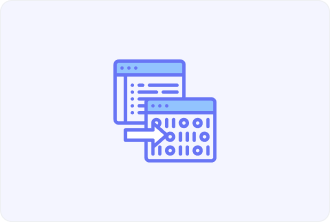Executable Code Definition

A very familiar term in the circle of software development, but what does one mean by “executable code”? Executable code means a kind of computer program code scheduled for execution on a computer system.
It is actually the final product that results from the different phases of software development, which translate high-level code written by a developer into a format meaningful for execution by a machine. It defines what executable code is, how it works, and illustrates aspects of software development where it’s important.
Executable Code Characteristics
The majority of executable code is usually in the machine-level code that a computer’s central processing unit can execute directly. Normally, it is generated from source code, which itself is normally written in high-level languages like Python, Java, and C++.
This generic source code has to be compiled or interpreted into an executable one. This shall involve source code that is human-readable, while on compilation, it gets translated into machine code that can be run by a computer. It, therefore, sits as binary instructions ready for running on computers.
The result of this compilation can be an executable file. These kinds of files usually have the extension “.exe” for Windows and no specific extension for Unix-based, though they do require setting appropriate executable permissions. This file contains machine code along with all the extra information that may be needed at run time, such as headers, metadata, or other additional resources sometimes.
Probably the most distinctive property of executable code, however, is that it can be directly run as is by the computer, with no further translation needed. That is what makes it different from source code or script elements that need an interpreter or a compiler to execute.
Performing Code Execution
Performing code means the actual execution of the concerning executable code by the computer’s CPU. Now, when an executable file is run, the operating system loads it into memory, and the CPU starts running the set of binary instructions making up a program.
The steps concerned with performing code are stated as follows:
- Load: An operating system loads a program into the memory of a computer and prepares it for execution. This involves the creation of an absolute memory space for the program’s code, data, and stack.
- Linking: The operating system then links any external libraries and modules that the executable would use or be reliant on. This step makes sure all the dependencies are resolved, and the program has access to all functions and resources that need to be used.
- Execution: The CPU executes machine code instructions one after the other according to the logic of the program as per the source code. It is where all the functions for the program get executed, whether data processing, user interaction, or even communication with other systems.
- Terminate: This will end the program once all the required work has been done;, hence it would free Memory and other resources which this very process is using. The operating system cleans to make sure that no resources remain allocated unnecessarily.
Software Development and Executable Code
This would be in the software creation process whereby the code is converted to something executable, hence the major part bringing a computer program into life. Source code is written by software developers using some of these high-level languages that get translated into executable code through compilation and linking. The main stages involved are:
- Source Code Development: Developers write initial programming Instructions in: high-level wayntax Human-readable code includes Logical Conclusion: based instructions define what a program is to do.
- Compilation means that source code passes through a compiler that produces equivalent machine code. It’s the step whereby the code, written in some human-readable language, gets converted into a form compatible and executable within the computer.
- Finally, linking is the process by which the machine code is combined with the necessary libraries or modules; all references and dependencies are resolved. Typically, this may already result in a fully ready executable file.
- Testing and debugging: A lot of testing and debugging is done before the executable code comes out. This is the phase where the program works properly and flawlessly.
- Deployment: The program, after testing and checking, should be deployed to the users. Quite often, it simply means distribution of an executable directly to the user or making it available for use by any user through a software distribution platform.
Conclusion
In the context of software development, executable code refers to an executable, final form of any program in its runable state. This means it is basically a result of source code written in certain high-level languages, being translated into real machine, instructive level, directly executable on a computer.
The developers should, therefore, understand the executable code and be familiar with its properties since this would lead to the formation of the basis for effective and resource-efficient software.
All subsequent phases of the development of an executable code—at this point, writing the source code, compilation, and linking of the code—are also one of the very important phases in the life cycle of software development. For a developer who masters these stages, there is nothing more expected than robust, reliable programs that can execute their intended functions efficiently.
In a nutshell, executable code is no more the final product of software development; it certainly is an important part that brings life to a program developed. Proper creation and execution provide assurance that software will execute for which it is meant functionalities so value will be derived by the user and technological progress attained.